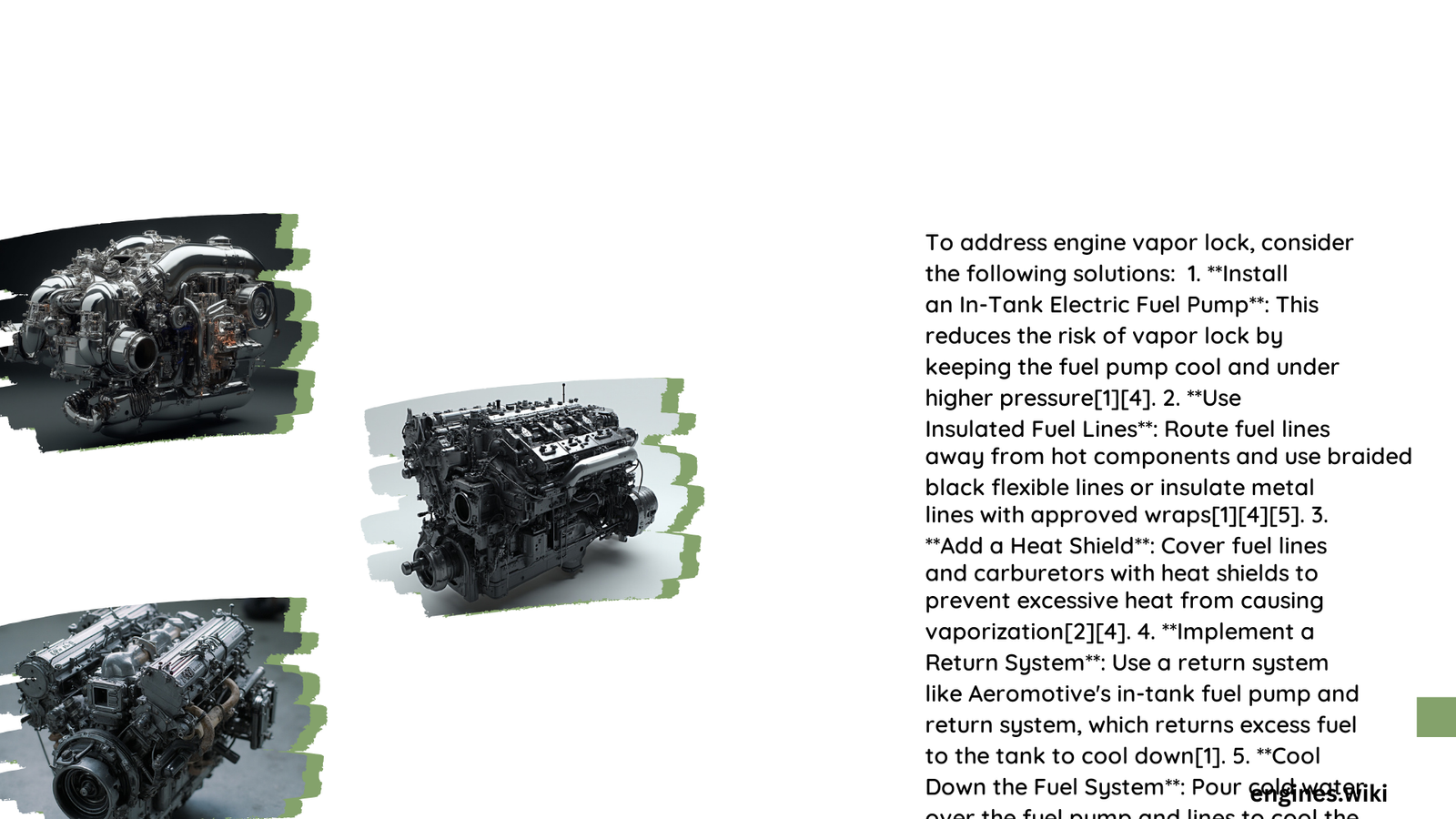Engine vapor lock is a critical performance issue where excessive heat causes fuel to transform into vapor, disrupting fuel system functionality. Automotive engineers and mechanics have developed sophisticated solutions to mitigate this complex problem, involving strategic modifications to fuel lines, pump systems, and thermal management techniques. These solutions range from advanced insulation methods to precise routing strategies that prevent fuel system interruptions.
What Causes Vapor Lock in Vehicle Engines?
Vapor lock occurs when fuel transitions from liquid to gas state prematurely, typically due to extreme heat conditions. Key factors contributing to this phenomenon include:
- High ambient temperatures
- Proximity of fuel lines to heat sources
- Low fuel system pressure
- Suboptimal fuel composition
How Can Fuel Line Routing Prevent Vapor Lock?
Strategic Fuel Line Positioning
- Keep fuel lines away from exhaust manifolds
- Use heat-resistant mounting brackets
- Create minimum 2-inch clearance from hot engine components
| Heat Source | Recommended Minimum Distance |
|---|---|
| Exhaust Manifold | 3 inches |
| Engine Block | 2 inches |
| Radiator | 1.5 inches |
What Insulation Techniques Work Best?
Effective insulation methods include:
- Nylon Braided Fuel Hose
- Provides excellent thermal resistance
- Durable under high-temperature conditions
-
Reduces heat transfer effectively
-
Ceramic Heat Shields
- Deflects radiant heat
- Lightweight design
- Can be custom-fitted to specific engine configurations
Which Fuel Pump Solutions Minimize Vapor Lock?
Electric Fuel Pump Advantages
- Maintains consistent fuel pressure
- Reduces heat absorption
- Provides more reliable fuel delivery
Recommended Specifications:
– Minimum operating pressure: 45-60 PSI
– Temperature tolerance: Up to 250°F
– Flow rate: 255 liters per hour
How to Select the Right Fuel?
Fuel selection plays a crucial role in preventing vapor lock:
- Choose ethanol-free gasoline
- Opt for higher octane ratings (91 or above)
- Consider racing-grade fuel for high-performance applications
Diagnostic Strategies for Vapor Lock Detection
Performance Indicators
- Engine hesitation during acceleration
- Intermittent stalling
- Difficulty restarting after short stops
Diagnostic Checklist:
– Measure fuel line temperature
– Check fuel system pressure
– Inspect fuel line routing
– Evaluate ambient temperature conditions
Advanced Mitigation Techniques
- Install in-tank electric fuel pumps
- Use phenolic carburetor spacers
- Implement comprehensive thermal management systems
- Regular maintenance and inspection
Conclusion

Addressing engine vapor lock requires a multifaceted approach combining thermal management, strategic engineering, and proactive maintenance. By understanding underlying mechanisms and implementing targeted solutions, vehicle owners can significantly reduce the risk of fuel system performance degradation.
Cost Considerations
| Solution | Estimated Cost | Installation Complexity |
|---|---|---|
| Fuel Line Insulation | $50-$150 | Low |
| Electric Fuel Pump | $200-$500 | Moderate |
| Comprehensive Thermal Management | $500-$1500 | High |
Expert Recommendations
- Consult professional mechanics for personalized solutions
- Perform regular system inspections
- Stay informed about latest technological advancements
